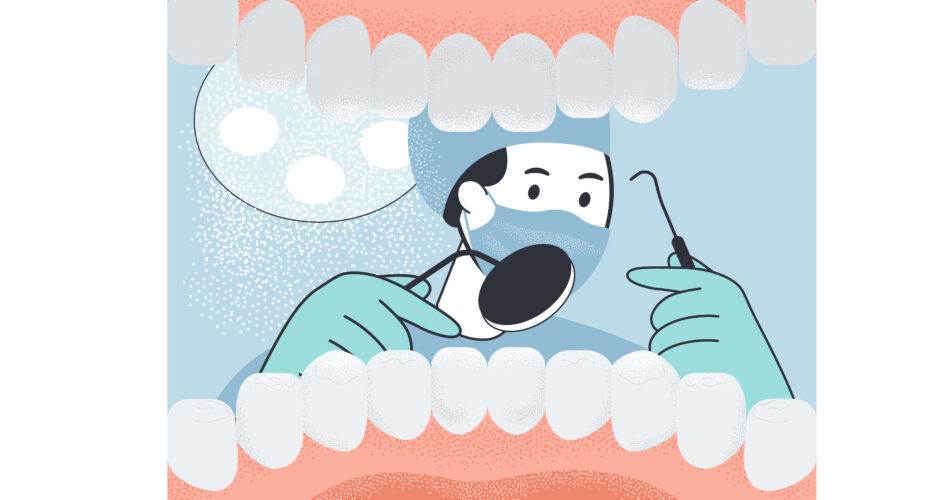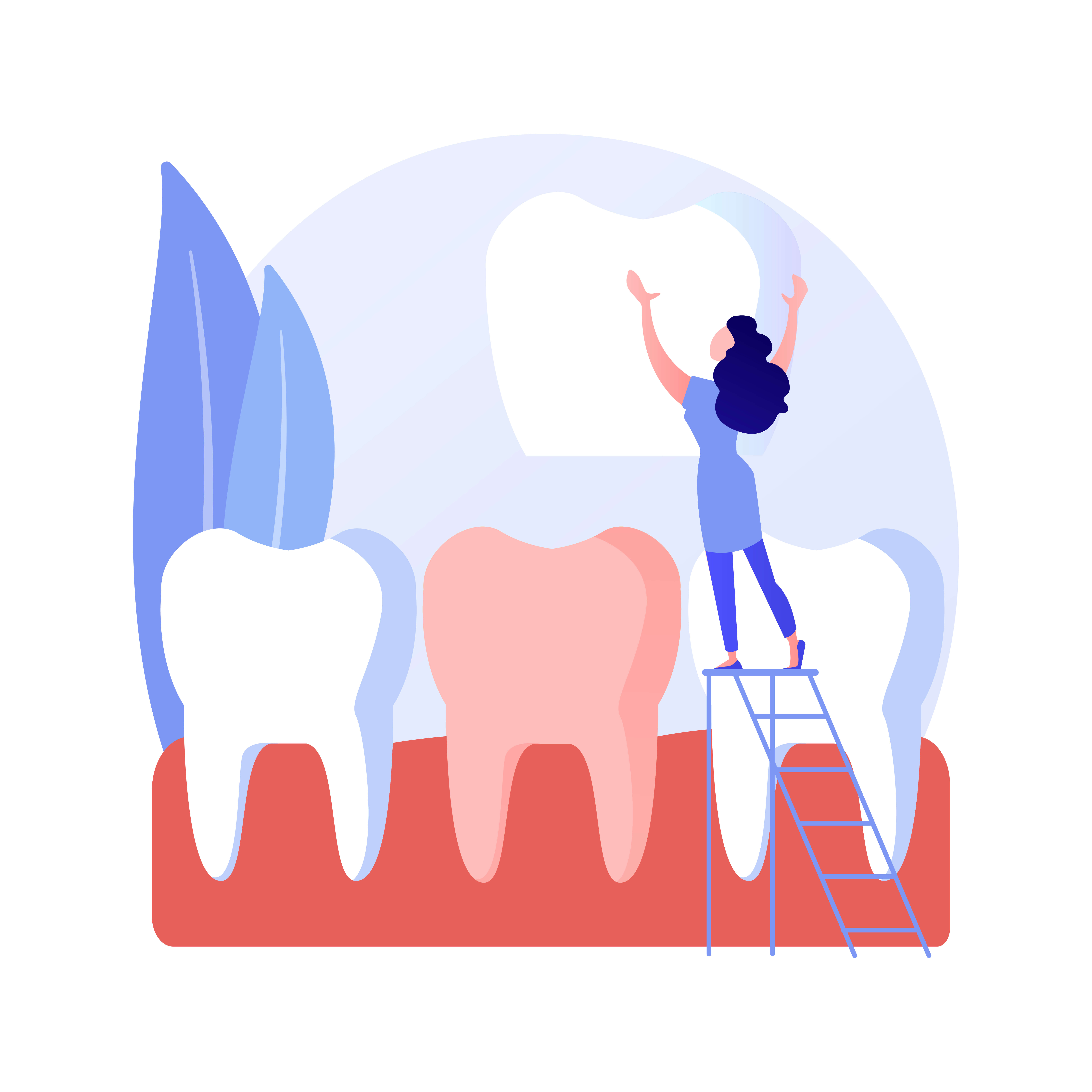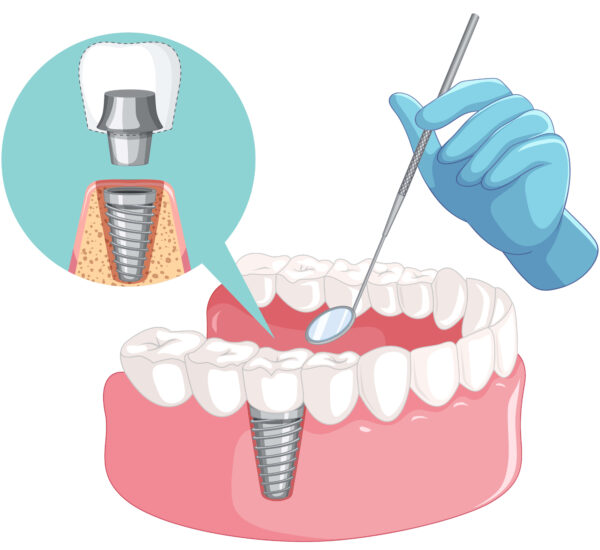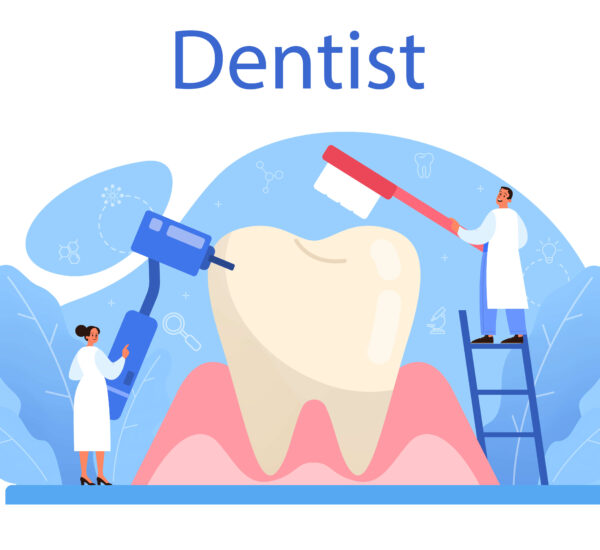One of the severe periodontal diseases that patients might possibly face is vertical bone loss. This periodontal bone loss occurs when the bones that support the teeth start to deteriorate vertically, leading to a weakening of the overall structure of the jaw. If left untreated, it can result in tooth loss and other complications.
In this article, we will explore the causes of vertical bone loss and the effective strategies to combat its effect on one’s oral health. Whether you are already dealing with this condition or simply want to learn more about it, this comprehensive guide will provide you with the information you need. Let’s begin!
Understanding Vertical Bone Loss
Vertical bone loss, also known as vertical alveolar bone loss, refers to the continuous and progressive loss of bone height and density in the jawbone. There’s another type of bone loss that is a bit different from vertical bone loss, which is horizontal bone loss. While horizontal bone loss is the most common type, do take note that vertical bone loss is the severe type. That’s why people must be aware of how this condition occurs and what to do for a healthier oral health.
When a patient has vertical bone loss, the jawbone weakens, making the teeth become more susceptible to damage and may even become loose or fall out. Thus, resulting in bone destruction which is typically a resulting scenario due to untreated gum disease or periodontitis.
Unfortunately, letting this condition prevail can result in alarming consequences. As the bone height and density decrease, the overall facial structure can be affected, resulting in a sunken or aged appearance. Additionally, the reduced bone support can impact the fit and function of dental prosthetics, such as dentures or dental implants, leading to discomfort and potential complications.
Regular dental check-ups and early detection of vertical bone loss are essential in maintaining oral health and preventing more severe complications. That way, patients can prevent their chances of developing this oral condition and protect their teeth growth and gum health.
Causes of Vertical Bone Loss
As mentioned, the condition is primarily caused by untreated gum disease, also known as periodontitis. When plaque and tartar build up along the gumline, bacteria can invade the gums, leading to inflammation and infection. Over time, this can cause the destruction of the supporting structures of the teeth, including the jawbone. Most of the time, people tend to disregard this condition, which leads to its progression to aggressive periodontitis.
Meanwhile, oral hygiene can also affect its progression as bacteria thrive more when people don’t take care of their oral health. That’s why it is important to always brush one’s teeth, floss, and do the needed hygiene rituals to ensure no build up or inflammation can occur.
In terms of other contributing factors, patients with osteoporosis can also possibly result in weakened jaw bones. In recent years, experts have studied the connection between the 2. Results of their study proved osteoporosis can lead to periodontal diseases like vertical bone loss.
Other factors may also include smoking, hormonal changes (such as during menopause), and genetic predisposition.
Understanding the potential consequences of this type of bone loss, can help individuals take proactive steps to maintain their oral health and overall well-being. It’s important to address these underlying causes to prevent further progression of the condition.
Symptoms and Diagnosis of Vertical Bone Loss
While some individuals may not experience any noticeable symptoms in the early stages, others may experience the following:
- Teeth becoming loose or shifting in position
- Receding gum line
- Gum swelling or tenderness
- Chronic bad breath
- Pus formation between teeth and gums
- Difficulty in chewing or biting
- Changes in the way your bite feels
If you notice any of these symptoms, it is crucial to consult a dental professional for a proper diagnosis. They will conduct a comprehensive examination that may include the following diagnostic procedures:
Diagnostic Procedures
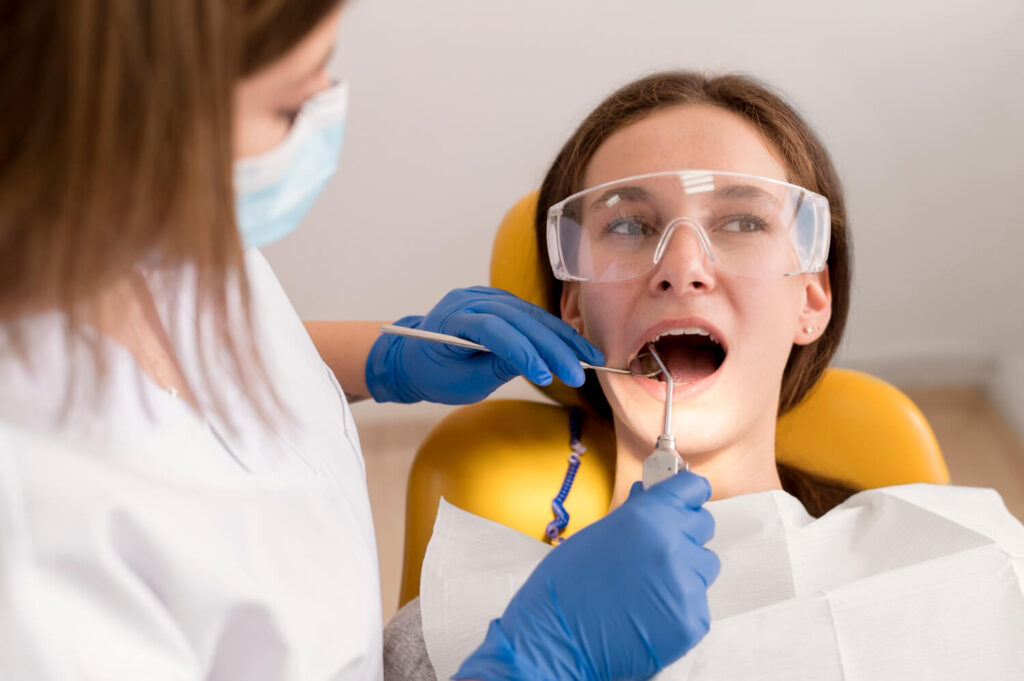
When the patient experiences the following symptoms mentioned, the only best way to address such symptoms is through a health consultation. Patients with vertical bone loss suffer from gum and bone resorption, which are very alarming. Although such events may probably be caused by other aspects, it is still important to have an intervention from an expert. That’s why visiting a dentist specializing in periodontics is vital.
With vertical bone loss, the patients will show vertical bone defects affecting the periodontal ligament and others. Patients with vertical defects must understand that these concerns are alarming, and a doctor of dentistry can help. So it is best to follow the appropriate treatment plan recommended by the doctor.
During the health consultation, this doctor will conduct several procedures to have a thorough assessment of your oral condition. That includes the following:
- Visual examination of the mouth
- Measuring pocket depth using a periodontal probe
- Dental X-rays to assess bone loss and determine the extent of damage
- Biopsy to rule out any other underlying conditions
These tests can help the doctor identify not only the bone destruction pattern, but also understand the needed treatment plan. After the full diagnosis of the doctor, they will conduct the necessary steps for treatment planning, which involves understanding the test results. There may be instances that the doctor might require additional tests for more accurate findings.
Prevention Strategies for Vertical Bone Loss
Prevention is always better than a cure, and this holds true for vertical bone loss as well. By adopting certain lifestyle changes, you can reduce your risk of developing this condition.
Here are some of the suitable forms of treatment that you can try:
Lifestyle Changes for Prevention
Choosing a better way to live life can make a huge difference for your oral health. That’s because certain lifestyle choices can result in the development of vertical bone loss. Without engaging with those factors, patients can be more proactive with their health as they choose to live better.

Here are some of the ideal lifestyle choices to try to avoid vertical bone loss:
- Maintain good oral hygiene by brushing your teeth at least twice a day and flossing daily.
- Quit smoking or using any other tobacco products, as they can contribute to gum disease and bone loss.
- Eat a balanced diet rich in vitamins and minerals that promote oral health, including calcium, vitamin D, and vitamin C.
- Avoid excessive consumption of sugary and acidic foods and drinks, as they can damage the teeth and gums.
Treatment Options for Vertical Bone Loss
Certain preventive measures may possibly work for better oral health, but when dealing with vertical bone loss, patients must also seek other forms of treatment. That’s what we’ll discuss below!
Non-Surgical Treatments
Dealing with vertical bone loss should not always involve invasive procedures. Just like lifestyle changes, patients can also try these non-surgical treatments.
- Scaling and root planing: This deep cleaning procedure removes plaque and tartar from below the gumline, allowing the gums to heal and reattach to the teeth properly.
- Antibiotics: Oral or topical antibiotics may be prescribed to control infection and reduce inflammation.
- Dental irrigation: A specialized device is used to flush out bacteria from periodontal pockets, aiding in the healing process.
Although, do take note that patients must listen and follow the doctor’s recommendations first, rather than utilizing other treatment options.
Surgical Treatments
Meanwhile, there are instances wherein a more intensive form of treatment is a must. Vertical bone loss can sometimes involve surgical interventions, especially if the condition is at its worst stage. That means the medication treatments can’t reverse the consequences brought by the condition.
Here are some of the possible surgical interventions that the doctor will recommend for curing vertical bone loss:
- Bone grafting: This procedure involves transplanting bone or bone-like material into the affected areas to stimulate new bone growth.
- Guided tissue regeneration: A thin barrier membrane is placed between the soft tissues and the bone, creating a space for the regeneration of bone cells.
- Flap surgery: The gums are lifted back, and infected tissue is removed, allowing for better access to clean and repair damaged bone.
Post-Treatment Care and Maintenance
After undergoing treatment for vertical bone loss, it is crucial to follow specific care and maintenance practices to ensure long-term success and minimize the risk of recurrence.
For instance, patients must be keen on keeping a healthier oral health by brushing and flossing daily. Paying close attention to the gumline and any areas of the mouth can help patients to prevent possible development of the condition. At the same time, visiting the dentist for a follow up check might also be an important aspect for healing. So, it is best to always listen to the doctor if there are sessions needed to monitor the oral health.
Meanwhile, patients can also ensure care and maintenance if the patient tries to avoid certain triggers such as letting go of vices like smoking. Tobacco products can hinder the healing process and increase the risk of infection. So, avoiding it at all cost can help the individuals to prevent vertical bone loss.
Conclusion
Vertical bone loss can have a significant impact on your oral health and overall well-being. By understanding the causes, recognizing the symptoms, and taking preventive measures, you can reduce your risk of developing this condition. If you are already dealing with vertical bone loss, early detection and appropriate treatment can help preserve the health of your teeth and jawbone
Remember staying proactive and seeking professional guidance can help you to effectively manage and cure vertical bone loss. Book an online consultation with a periodontist to restore your smile and oral health.
